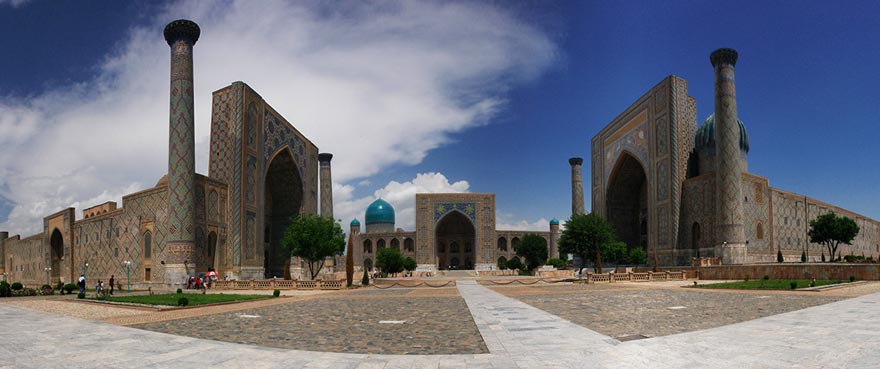Samarkand

The region of Samarkand is located in the center of Uzbekistan, near the Zarafshan River basin, and is 16,000 square kilometers. The population includes more than two million people, half of which inhabit the rural areas. The region is divided into 16 administrative districts with Samarkand City in the center, inhabited by 366,000 people.
History. “Precious pearl of the Islamic world” and “face of the ground” were the names given to Samarkand by the poets and historians of the past. Like Tashkent, Samarkand has a 2500-year-old history. The convenient geographical location of Samarkand in the Zarafshan River basin made this city an important crossroads on the great Silk Road.
Samarkand is a popular tourist centers both in Uzbekistan and in Central Asia. Founded in the 1st century b.c., it was originally called Marchanda. Under the rule of Amir Temur, the region prospered. Born in the city of Shakhrisabs, Temur made Samarkand the capital of his great empire which stretched from the Ind River to the Bosfore River.
Registan Square was for many centuries, and remains, the center of Samarkand. Many centuries ago, Small River crossed the square where the first madrassa was constructed. Years passed and the river dried up leaving only the sand in the riverbed. Registan means “the sandy spot.” In the 15th century the first madrassa was founded here. Beginning from that time, all celebrations, festivals, and Sunday bazaars have taken place in Registan square.
There are a number of mausoleums and mosques in Samarkand that were built by Amir Temur. The Shakhi-Zinda Mausoleum was built in the 14th and 15th centuries under Temur's rule and is the burial place of most of his female relatives. The Gur-Emir Mausoleum was constructed by Temur's order to honor his dearly loved grandson, Mukhammad Sultan, who died prematurely. The Juma Mosque built in 1399 in honour of Amir Temur's wife, Bibi Khanum, is one of the most magnificent buildings in Samarkand.
Culture. Many tourists visit Samarkand to pay homage to the relics and sacred places of the Islamic world. One can visit the grave of Saint Kusam ibn-Abbas, a place that during the middle age, when visited was regarded equal to a Hadj to Mecca. Samarkand with its unique historical and architectural monuments, age-old national traditions and holidays and secrets of Asian cuisine awaits guests to this experience of time long gone.


